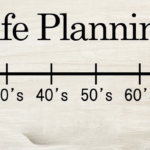
Navigating Life’s Milestones
October 29, 2025
Retirement: Inflation and Purchasing Power Risks
October 31, 2025Health Savings Accounts as a Retirement Strategy
A powerful retirement savings vehicle that complements 401(k)s and IRAs
Healthcare is one of the most underestimated expenses in retirement. According to Fidelity, the average 65-year-old couple retiring today may need over $300,000 for medical costs alone. With inflation pushing costs even higher, investors need dedicated strategies to address this risk.
Why HSAs Are Powerful
HSAs stand out as one of the most tax-advantaged accounts available:
-
• Triple Tax Advantage: Contributions are pre-tax, growth is tax-free, and withdrawals for qualified medical expenses are also tax-free.
• Investment Growth: Many HSAs allow investing contributions in mutual funds or ETFs, compounding wealth over decades.
• Flexibility at 65+: After age 65, withdrawals for non-medical expenses are taxed like a traditional IRA – providing a back-up retirement income source.
Strategy for Ages 35–55
For clients in their peak earning years, HSAs are a dual-purpose tool: they can cover current medical costs while building a reserve for future healthcare expenses. By contributing the annual maximum (currently $8,300 for families in 2025) and investing those funds, clients can accumulate significant tax-free savings for retirement health needs.
Market Climate: Why It’s Relevant Today
With inflation driving up premiums, deductibles, and out-of-pocket expenses, HSAs are becoming essential. The unique tax benefits provide an edge in wealth accumulation at a time when every percentage point matters. For pre-retirees, this is a way to hedge one of the biggest uncertainties in retirement planning.
Key Takeaway: HSAs are not just a tool for paying today’s doctor bills – they’re a powerful retirement savings vehicle that complements 401(k)s and IRAs.
WITHSTAND AND THRIVE
Retirement planning in today’s world demands flexibility, foresight, and personalization. For investors between 35 and 55, the path to long-term financial security requires more than just saving – it means aligning strategies with lifestyle needs, market conditions, and evolving risks.
This allows investors to create a retirement plan that not only withstands today’s challenges but thrives in tomorrow’s opportunities.
To learn more,
Copyright © 2025 FMeX. All rights reserved.
Distributed by Financial Media Exchange.




